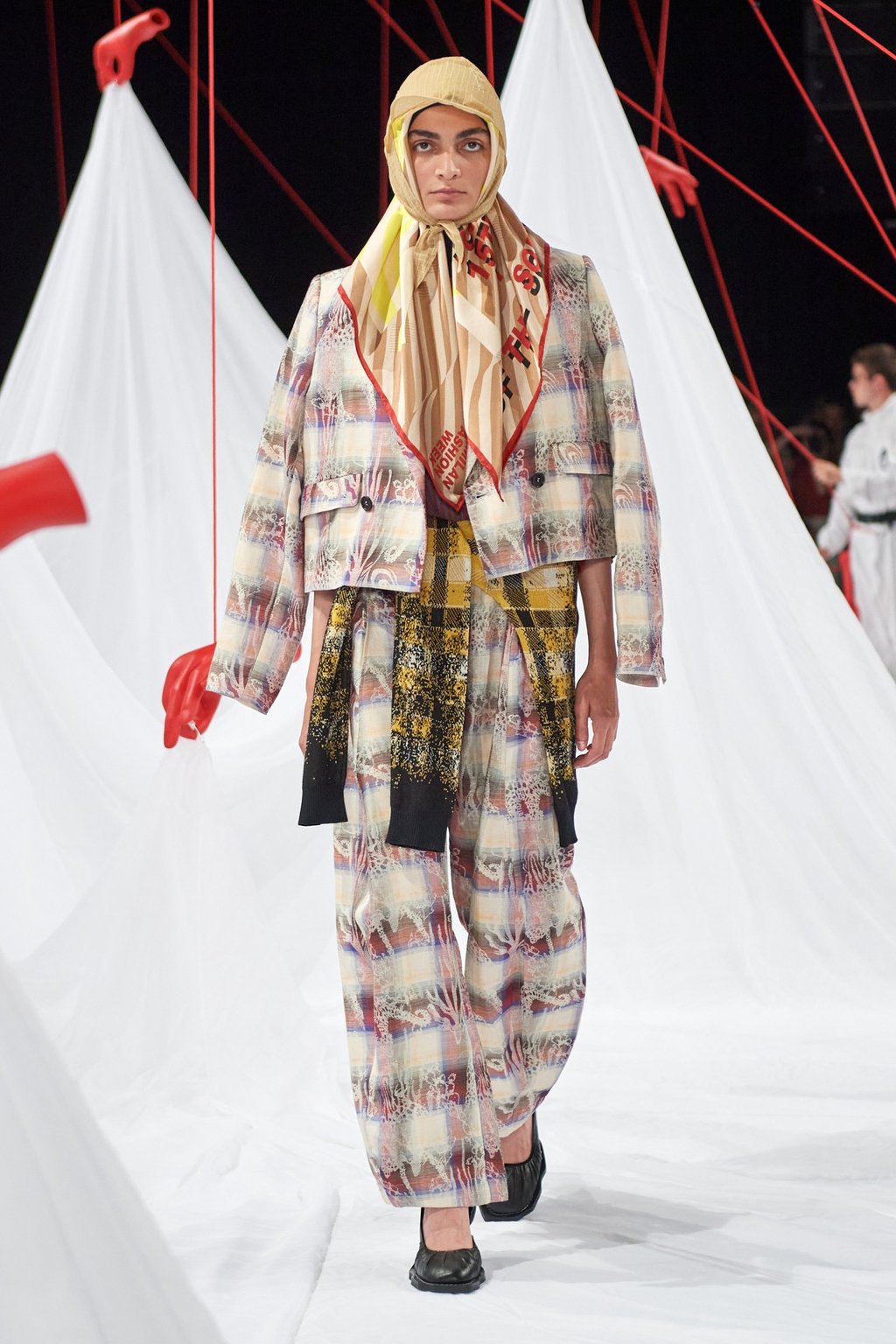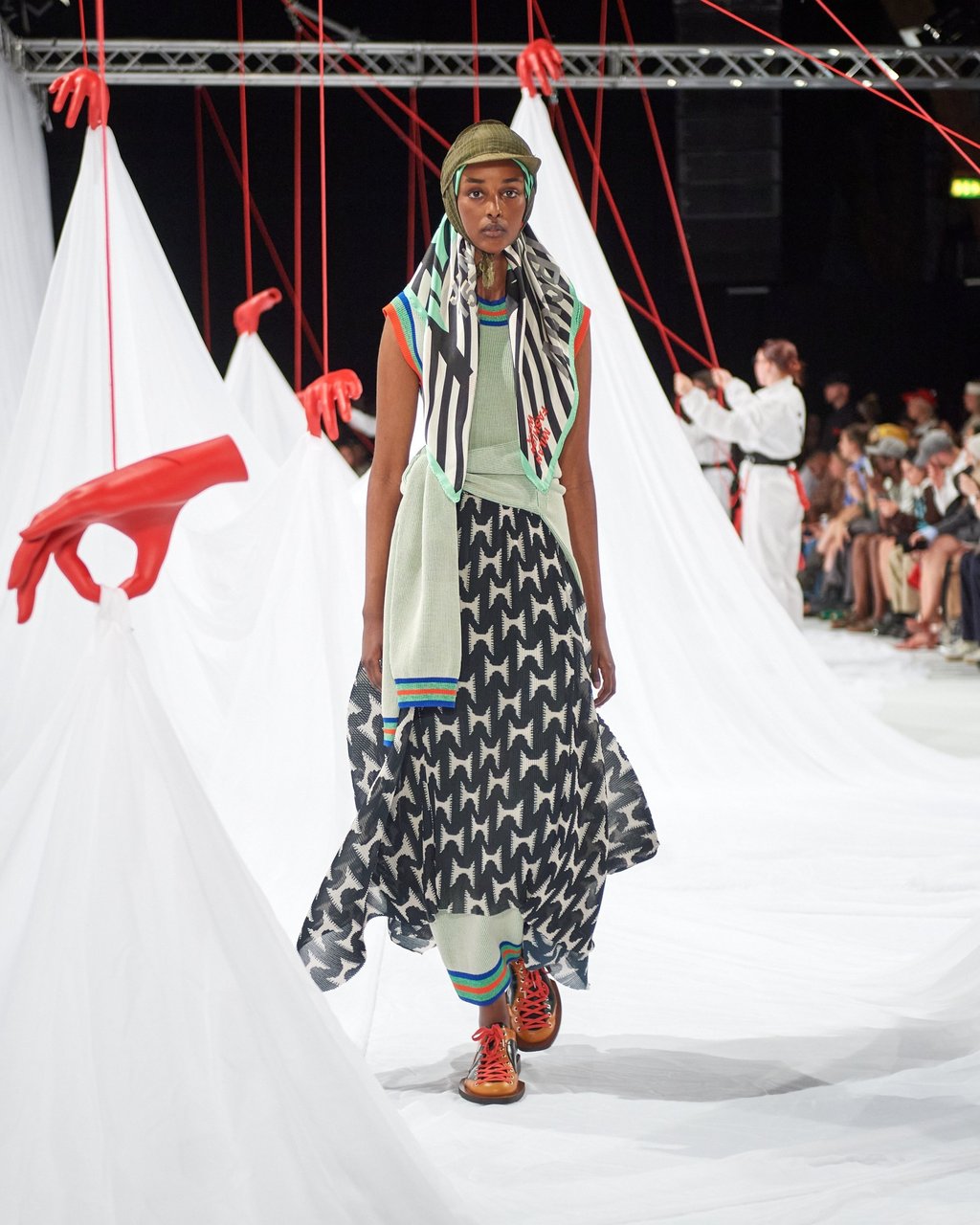Danish designer, curator and musician Henrik Vibskov on maintaining authenticity and joy in fashion – why craftsmanship matters more than logos, and empathy more than money

Known for his bold, original designs, Vibskov has spent more than 2 decades thrilling audiences with collections and shows that are equal parts fashion, art and performance
“[They asked], ‘Can you speak in privacy?’ I was like, ‘Not really, because you’re on speaker,’” Vibskov says with a chuckle as he recounts the chaotic thought process that ensued after realising he had no free hand to pick up the phone. Hands would ultimately form the focal point of the show The Orchestra of the Soft Assistance, which featured dozens of red puppetry hands in mid-air. “That was this very soft idea – when you have difficulties, we have to be better [at] assisting and helping each other. Empathy is super-important,” he says.

Vibskov wears many hats, figuratively and literally. You will frequently find the designer sporting beanies or more eccentric headgear, whether participating in an exhibition at New York’s Museum of Modern Art, as he did in 2007, or acting as a guest lecturer at Denmark’s Louisiana Museum of Modern Art. But apart from the more obvious quirks, such as his bohemian attitude and personal style, Vibskov’s deeply empathetic nature is what’s made him a household name in Scandinavia and beyond during his 20-plus years in the business.
The designer’s tight-knit group – affectionately dubbed “Team Vibs” – frequently takes pride of place at the designer’s shows and presentations, bringing them to life. At his Copenhagen event they were kitted out in white hazmat suits, discreetly pulling the puppet strings behind a series of sweeping curtains that unveiled each look from the collection individually.

Seated – compactly – next to several of Vibskov’s closest friends and contemporaries, I witnessed The Orchestra of the Soft Assistance play out to magnificent effect before a full house. Front-row guests, chatting and connecting to the point where few realised the show was starting half an hour late, gushed about the designer’s kindness as much as his talent before finding themselves drawn into his world of eclectically dressed models and floating hands.
A performance artist at heart, Vibskov could be described as one of fashion’s final holdouts, an increasingly rare commodity in an industry deeply entrenched in the business of celebrity, more prone to producing grand theatrics than meaningful clothing. Fierce competition from brands seeking to outdo one another has made the traditional runway show an overblown luxury fewer and fewer designers can afford.
“It became so pricey in Paris for what should be [something] fun”, says Vibskov, who instead chose to show this season in Milan, the fashion capital of Italy, which together with Asia and the United States remain his brand’s bestselling regions. “You can’t do anything because it costs a million.”